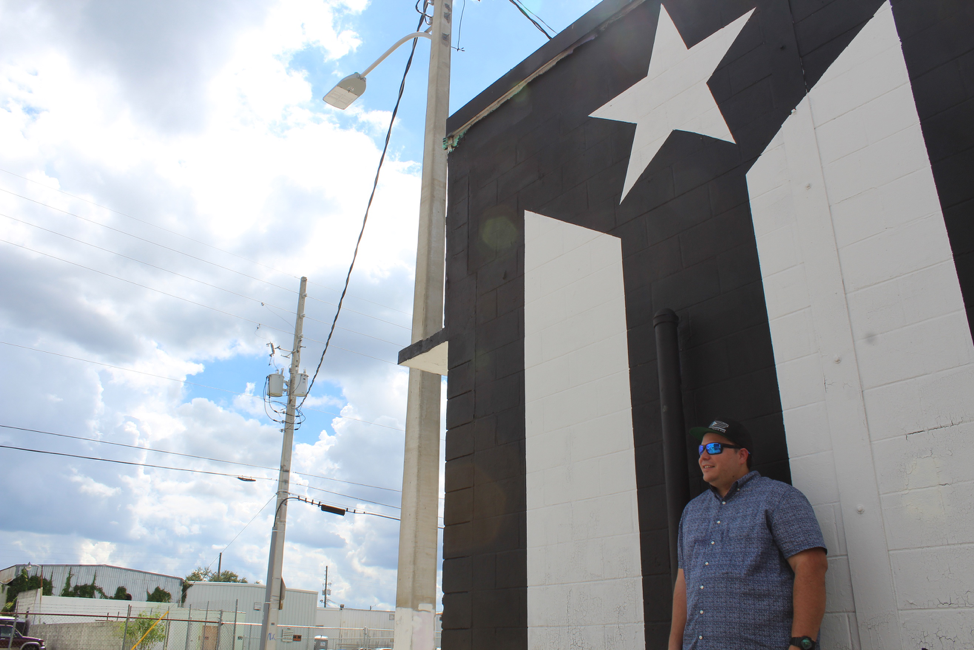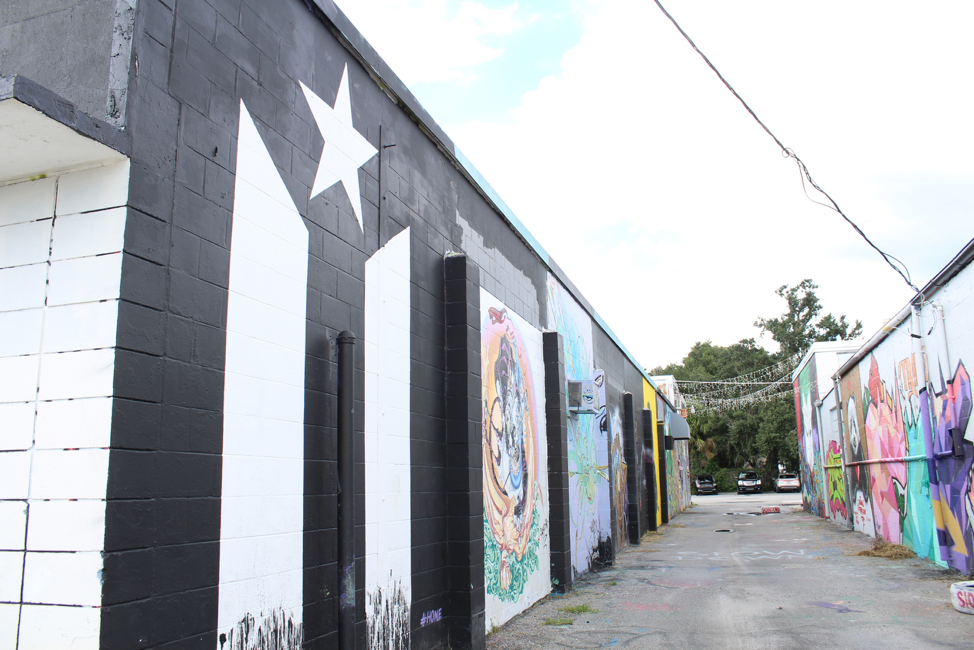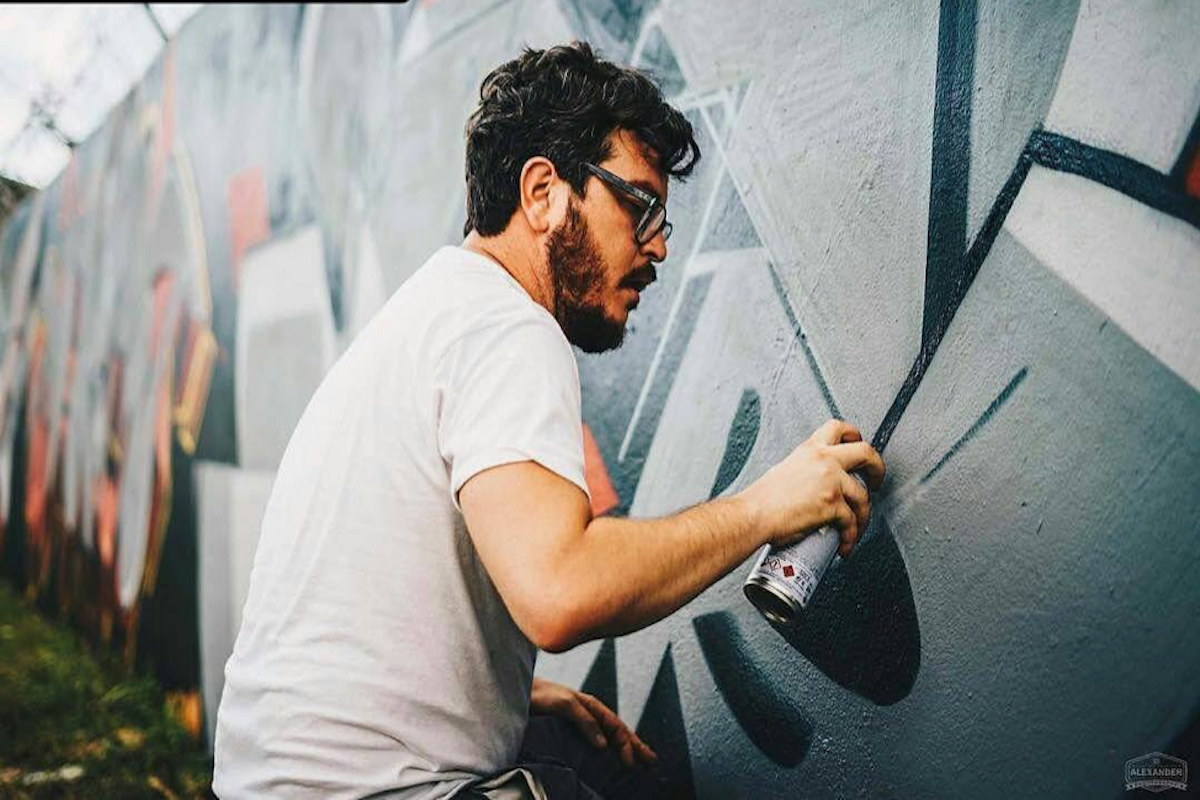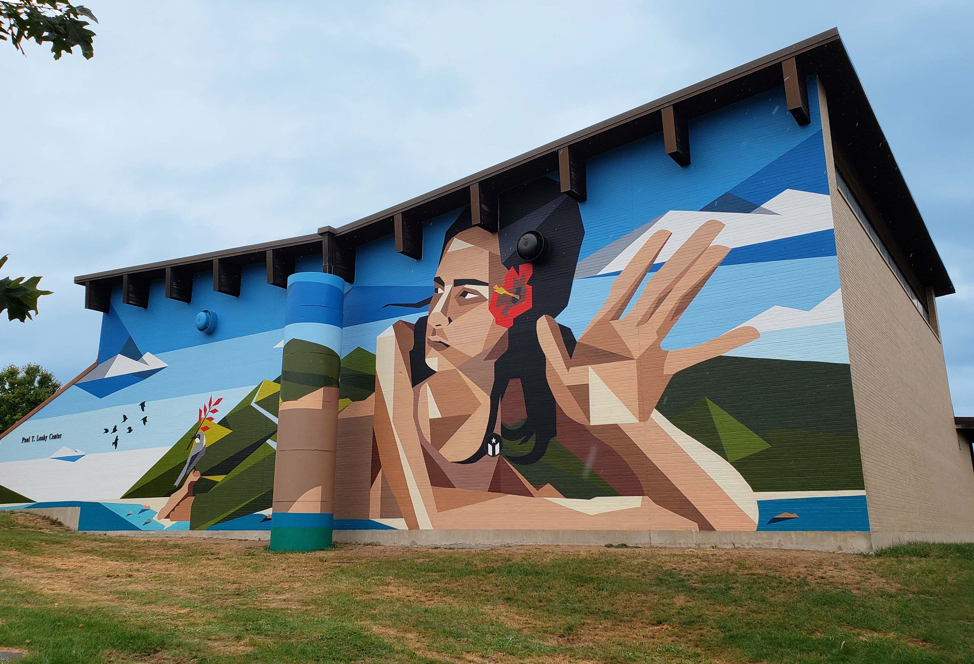

(Photo by Phillip Arroyo)
ORLANDO — It was a cloudy day as I was casually driving through the Parramore community with my wife Josephine on the west side of Orlando, after departing a community event where she gave a speech about the effects of climate change. While I was driving, I was thinking of her speech—it reminded me of my homeland of Puerto Rico and all the injustices it continues to face, from the unilateral imposition of an undemocratic “fiscal board” supported by both Democrats and Republicans to President Trump’s poor response to Hurricane María on the island; a hurricane caused in great part by climate change. I remember feeling a little discouraged and down because although numerous sectors within our society both on the island and the United States have spoken up and denounced these atrocities, no tangible nor visible justice can be seen on the horizon for the people of Puerto Rico.
As many activists may know, there are days here and there when we tend to doubt whether or not what is being done to expose an injustice and correct a societal wrong is actually working. For me, this was one of those days. I remember asking myself whether we were gaining any actual ground in regard to Puerto Rico’s predicament.
I remember feeling frustrated with local politicians who seemed to be using Puerto Rico as a political football to woo Puerto Rican voters, while at the same time remaining silent on core issues such as the unjust and undemocratic fiscal board imposed on the island by U.S. Congress, the repeal of the Jones Act and the island’s centennial colonial relationship with the U.S. I had recently done various TV interviews where I was able to articulate and advocate for my homeland, and I remember wondering whether my efforts of awareness were even working? Ultimately, I questioned if it was even worth to keep fighting.
And that’s when I saw it…
After passing the intersection of Westmoreland and W Central Blvd, a black and white Puerto Rican flag mural emerged into our view. My eyes widened in surprise and I signaled the mural to my wife. “Look honey!” I said excitedly. “Oh wow! What are the odds of that being here?!” she responded.
We couldn’t help but pull over to get a glimpse of the mural up close. It was still cloudy and I can still feel the drizzling raindrops falling upon us and hear the sound of those drops landing on the Orlando Magic cap I had on. After we had parked, we walked towards the mural, and a sense of excitement and reassurance came over me as if with every step we took. my hope became more and more replenished.
And there it was. I could not help but stand in awe of such a large and visible piece of art in the Parramore community. My wife and I just stood there in appreciation of this mural that represents so much more than just art, but also seemed to relay the grieving of an entire Puerto Rican nation that weeps due to the continued abuses and exploitation is has had to endure for more than a century.
My wife and I took some pictures of the mural and then headed back to our car while we discussed what we had just discovered. I told my wife how we just had to locate the artist who painted the mural. Luckily, the artist had left his Instagram handle on the lower left-hand corner of the mural: @ermes787. I was curious to know what inspired him or her to paint the mural and why he or she had selected the community of Parramore as the location to showcase the art. I reached out and got my answer to those questions and more!
After establishing contact via email with the painter whose name is Adrian Fragoso, we agreed to meet 2 days later at the sight of the mural. On the day of our meeting, as I drove up to the site, there was a group of around 15 street artists standing nearby the mural. Fragoso and fellow artists were just wrapping up a meeting about new murals they were planning, and coordinating a gallery event. As the huddle broke up and the meeting came to an end, Fragoso, who was wearing a blue shirt and a black hat which read “ISLA” accompanied by a black and white Puerto Rican flag, walked towards me saying “Phillip? Como estas hermano?,” (Phillip? How are you brother?) while we shook hands. We then walked towards his mural where I was able to interview him.


Adrian Fragoso posing in front of his mural (Photo by Phillip Arroyo)
He shared that the intent of the mural was to relay a message about Puerto Rico which he was unable to articulate verbally, as is the case with many fellow Puerto Ricans. He told me how the black and white flag originated in Puerto Rico and has been interpreted as a sign of Puerto Rico grieving after U.S. Congress unilaterally took over the island’s government through the passage of the PROMESA Law, also supported by both Democrats and Republicans.
When asked why he had decided to paint the mural in the community of Parramore, a historically African-American neighborhood which has itself also been the victim of economic exploitation and developments similar to Puerto Rico, he said that in addition to the high level of visibility the spot provided to passing cars, he picked the spot for another reason I was not expecting at all.
“This wall is actually looking at the big interests (East side Orlando) right now. So, when they exit, they see it and they know, and they research it. So it’s in their face,” he said. “We wanted the United States to know what we are feeling, see what we are feeling, something tangible that they can actually see. And when they see this and notice it’s a different color and they ask themselves why it is black, that’s when the research starts. That’s when they start looking at all the news and when they know about what’s happening in Puerto Rico. The purpose is to bring knowledge about what’s going on in Puerto Rico.”
The West side of Orlando stands within the poorer population of the city where the majority of the citizenry is African American. This sector was the subject of a recent story by the Huffington post that magnified the corporate and environmental abuses it has been subjected to due to developments and corporate greed.
As is the case in many big cities, the city of Orlando is composed of different sectors which visually and socially magnify certain demographics. East to the mural Adrian painted is downtown Orlando and the heart of the financial sector in the city where many banks are located, some of which have been directly involved with the financial exploitation of the island. Numerous protests have been held throughout East and South Orlando by organizations such as Organize Florida and VAMOS for Puerto Rico, to voice the Puerto Rican diaspora’s discontent with the U.S. financial sector and the federal government’s treatment of Puerto Rico both before and after Hurricane María.


Black and white mural of the Puerto Rican flag within the Parramore community in Orlando. (Photo by Phillip Arroyo)
Fragoso and I then ventured into a discussion about President Donald Trump and Puerto Rico’s Governor Ricardo Rossello’s recovery efforts post-hurricane María. “We don’t matter to them, they’re just there for corporate interests. We’re not relevant to their eyes,” he said briefly before concluding by stating how future generations can generate change for Puerto Rico by “pulling up our bootstraps, uniting as a people and fighting for it, because this is not going to change, WE have to change it.”
Fragoso went on to detail how the painting of this mural has not only taken place in Orlando, but is actually part of a nationwide effort to spread awareness about Puerto Rico through art. Such is the case of Spear Torres, a talented graffiti artist based in Puerto Rico who has commissioned various murals throughout the U.S. such as Worcester, Massachusetts. Adrian put us in contact with him on the spot and he spoke to us directly from Puerto Rico about his art and his thoughts on Puerto Rico’s current situation.
He said that he was invited by the International POW WOW Worcester Festival to commission a painting, but in addition to that, Worcester is a city with a large Puerto Rican community where he started painting graffiti many years ago.
“It’s a city with a large Puerto Rican population and I wanted to talk to them. The name of the piece I painted is ‘La Isla’, and it is about the gentrification of the island at the hands of invaders from the country that holds us as a colony; a country that has economic interests and legal benefits over millions of Puerto Ricans who are forced to generally exchange their paradise for a ghetto in the United States,” expressed Torres, “La Isla” translated to “The Island.”


Spear Torres working on a recent mural. (Photo courtesy of Phillip Arroyo)
Torres then described the meaning behind his artwork in Worcester, explaining how the character representing the island in the mural is looking towards a flock of birds of prey which are getting closer and closer. The main central female character is lifting her hand as if to scare off the birds of prey, while at her feet there is a Gray Kingbird commonly known in Puerto Rico as “pitirre”, an iconic small yet brave bird that is known to defend its offspring from larger birds of prey despite its size.


Mural commissioned by Spear Torres in Worcester, Massachusetts. (Photo courtesy of Phillip Arroyo)
Included within the mural is a black and white Puerto Rican flag which the woman wears as a badge on her left. When I also asked him about the meaning of this flag, Spear Torres stated that “it is a symbol of resistance against unusual political practices that affect the common collective and individual well-being of Puerto Ricans.”
When asked about Donald Trump and Puerto Rico’s Governor Ricardo Rossello’s response to Hurricane María he said “Their actions are as expected; neither one of them have the fundamental well-being of Puerto Ricans within the prime objectives of their work.”
Torres had this message for Puerto Ricans in Puerto Rico and the U.S.: “First of all, I ask that we carefully and critically analyze the news received about Puerto Rico by the media, especially the “mainstream” media, even if they are Hispanic outlets. And as insignificant and unempowered the system may make us feel, this is only a manufactured illusion which we can immunize ourselves from by educating ourselves and through acts of conscience which can positively affect the course of history of the country we come from.”
Upon concluding the conversation, I thanked Adrian for speaking to us and for putting us in contact with Spear Torres. He then proceeded to invite me and all Latino Rebels readers to the upcoming West Fest to be held in December at a date to be announced. During this event, his graffiti artwork of the black and white Puerto Rican flag will be showcased along with many other pieces of his art in the alley that first caught my eye.
After getting back in my car, I dropped my camera onto the passenger seat, turned on the ignition and drove out of the parking lot while I waved goodbye to the group of artists still standing around the area. I then drove past the mural one last time in direction of the I-4 expressway to head back home. It was no longer a cloudy day, as the sun was brighter than ever.
While driving away, I took a look at my rear-view mirror and could see Adrian’s mural of the black and white Puerto Rican flag disappearing from the horizon behind me.
I smiled while accelerating.
There is still a glimmer of hope for Puerto Rico……
***
Phillip Arroyo is a writer, civil rights activist and political analyst who frequently appears on numerous national and international media outlets. Mr. Arroyo served both in the Puerto Rico Senate, the Puerto Rico Department of State and was selected as the only Puerto Rican to serve in the 2012 White House Internship, having worked in the office of the Vice President Joe Biden, where he analyzed domestic and economic issues while at the White House. You can follow him on Twitter @PhillipArroyo.


